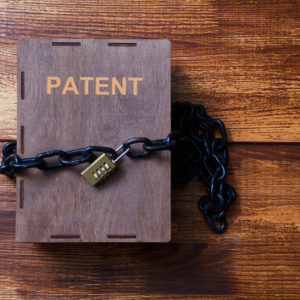Patents are granted to those who create technologies. The invention process usually brings to mind images of tinkerers in garages or scientists in laboratories, innovating ways to improve the lives of Americans.
The patent process ensures that the painstaking process of invention is encouraged by rewarding the inventor with an exclusive right to the new technology for some time. This monopoly right is a very powerful incentive and has led American innovation to become the best in the world. We assume that the patents granted under this system are genuine innovations and good patents. But what happens when the government grants a bad patent? In short, nothing good.
A bad patent that is worded poorly or overly broad can give its owner an exclusive right over widely used technologies or practices. While good patents protect the right to produce new technologies, bad patents grant rights over existing technologies, often those used by small businesses to improve the customer experience or increase efficiency. A bad patent becomes a weapon used to demand licenses from companies of all sizes through threats or lawsuits — and patent litigation is shockingly expensive.
A typical patent case can take three years and cost more than a million dollars — an untenable cost for most small businesses and Main Street retailers. Most businesses faced with this threat feel forced to pay a much smaller settlement fee to the bad patent owner rather than undertake a million-dollar legal challenge. Letters demanding settlement fees in the range of $10,000 to $50,000 have flooded Main Street, raising costs for businesses and prices for consumers.
Congress recognized this threat to businesses in 2011 when it passed the America Invents Act, which created a faster, cheaper solution to the bad patent problem. Instead of having only the choice to settle or face expensive, protracted litigation, businesses could challenge bad patents in a special agency process called inter partes review (IPR). The law significantly affected Main Street, allowing bad patents to be efficiently challenged for a fraction of the cost. A recent study found that IPR has resulted in nearly $3 billion in gross product and significant job creation. IPR is a critical element in blunting the effect of bad patents on the wallets of consumers and businesses.
Take, for example, a bad patent that claimed to have a monopoly on certain types of technology that enabled printing over a network. The bad patent owner searched for commercial print shops, many of which were family-owned, and demanded payment for licenses for the use of technologies that were already common in the industry. It sued 74 businesses in 23 states that used that type of technology. Several commercial printer companies joined forces and challenged the bad patent in IPR and were able to invalidate it quickly and economically, preventing the patent owner from harassing other businesses.
However, after years of helping protect businesses, this vital safeguard is now threatened by proposed legislation in the Senate. The PREVAIL Act threatens IPR by limiting access, complicating the process, and reducing the likelihood of success. In short, PREVAIL would make it easier for bad patent owners to game the system, leaving consumers and small-business owners to foot the bill.
Luckily, there is still time to prevent this disaster. Lawmakers can reject the PREVAIL Act and instead turn to strengthening the patent examination process and our patent system. Congress should address the root cause of bad patents by giving the U.S. Patent and Trademark Office the resources its examiners need to undertake a more robust review of the hundreds of thousands of patent applications filed yearly. Rather than changing the law to protect a handful of bad patent owners, Congress should ensure the patent system is living up to its constitutional mission — promoting innovation for the benefit of the American public.



